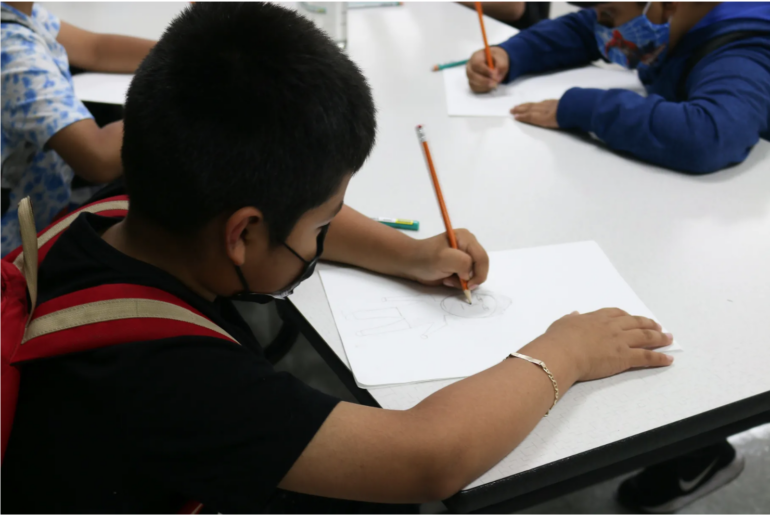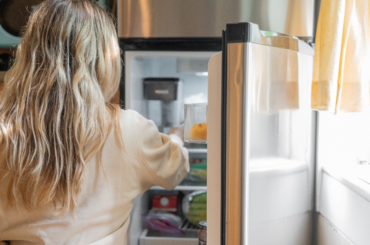This story was originally published by Chalkbeat. Sign up for their newsletters at ckbe.at/newsletters.
When students returned to Ermel Elementary School this school year, the calendar looked a lot different.
The high-poverty Houston school added 30 school days, creating a 210-day school year that began in July and ends in June. Students now have longer recess and teachers have more planning time. Every Wednesday, students have blocks of extra math and reading instruction, plus time to work on longer projects.
“It’s gone great,” said Principal Erik Torres, who says students have progressed faster academically and been more engaged in class as a result. “We’re going to see tremendous growth compared to last year.”
But despite widespread learning loss and the large sums of federal money distributed to schools nationwide as a result of the pandemic, Ermel is more the exception than the rule.
Across the country, schools are adding learning time, but typically only for a fraction of students whose families opt for extra programming. Chalkbeat reviewed 45 large districts’ spending plans and found that while virtually all of them mentioned more after-school or summer school programming, very few planned to add minutes or days to the normal calendar.
That means that although most American students have fallen behind academically due to the pandemic, only a subset appear likely to get more school time. Some fear that this take-it-or-leave-it model could leave many kids behind.
“It’s just not clear, if you make things optional, who’s going to participate,” said Morgan Polikoff, a University of Southern California education professor who has surveyed parents about adding school time.
The prevailing approach has significant upsides. Perhaps most importantly, adding optional programs is more popular with parents, who polls show are skeptical of lengthening the school day or year. It’s also less costly and lets schools target the students most in need.
Judy Sutel, a second grade teacher in Brooklyn, has found success working after school with a group of six students who need extra help in math, reading, or both.
“100% — my kids are already benefiting,” she said. “When I have a better sense of what they’re able to do and not do, I can then tailor the work to meet them where they’re at.”
In Jonesboro, Arkansas, high school teacher Jessica Nadzam has spearheaded an effort to add after-school credit recovery courses taught by a live teacher rather than a computer program, as is common. Nadzam acknowledges it’s a quick fix — students can recover a semester-long course in 10 after-school sessions — but she says it’s been a huge boon for students who failed classes during COVID.
“It’s not a perfect solution,” she said. “It’s putting the finger in the wall so the dam doesn’t break.”
Will these sorts of extra programs benefit students? Quite possibly. Research suggests that more time in school, including during the summer, typically helps students do better academically.
But add-on programs face a big challenge: getting students to show up. While school attendance rates are typically around 90%, in one study of a well-funded summer school program, summer attendance was around 75%. That didn’t include the many children who signed up, but didn’t show up at all.
In Washington, D.C., schools have added a number of programs to help students catch up, and the district is trying to attract students by ensuring the programs are fun and engaging. “Yes, you’re going to get practice with key skills and standards — and you’re going to get to do dance,” said Jennifer Rosenbaum, the district’s deputy chief for acceleration. “It doesn’t just feel like more of the same.”
The district says that this year 4% of its students have gotten extra tutoring, 9% have participated in acceleration academies, and it is hoping to enroll 16% of elementary school students in this year’s summer program.
A challenge facing targeted programs, though, is that it’s not always the students most in need of extra help who actually get it. One school in Manhattan, for instance, created a Saturday tutoring program for students with disabilities, but turnout was so low it was expanded to include general education students. “We’re not servicing as many kids as we would have liked,” the principal previously told Chalkbeat.
In an effort to address this concern, students in D.C. identified as more in need received priority access to summer school.
By and large, parents support the approach taken by D.C. and other districts: maintaining existing schedules with new programs tacked on as an option.
In Selma, Alabama, schools have added after-school programs and summer school for families but steered away from mandatory additions. “We survey our community — they want choice,” said superintendent Avis Williams. “There are reasons that some families may have that their scholar cannot stay after school.”
One poll from last year found that 71% of parents were opposed to longer school days, which could disrupt carefully planned family schedules. Most parents were also against shortening summer break, which could mean cutting into family traditions or losing some rituals of childhood.
“People like me — pointy-headed people who are really worried — think we need to do big things,” said Polikoff, who helped design the poll. “But it’s really not clear that there’s much interest in it from parents.”
Another barrier to mandatory added time is school staff, many of whom are exhausted and reluctant to take on extra work even for extra pay.
But getting parents and teachers on board with an extended day or year is not impossible.
Torres, the Ermel school principal, said he initially faced resistance from some teachers and parents to the added days, which were paid for through a Texas program that encourages schools to revamp their calendars. But he made the case by emphasizing that teachers would get extra pay and parents would get additional free child care. Only two families decided to leave the school because of the longer year.
Torres — who attended the school himself as a child — said the school has local credibility, having served multiple generations of many families. “Once you have that trust built in within the community and the campus, they’re more apt to be willing to accept these changes,” he said.
Chalkbeat is a nonprofit news site covering educational change in public schools.







